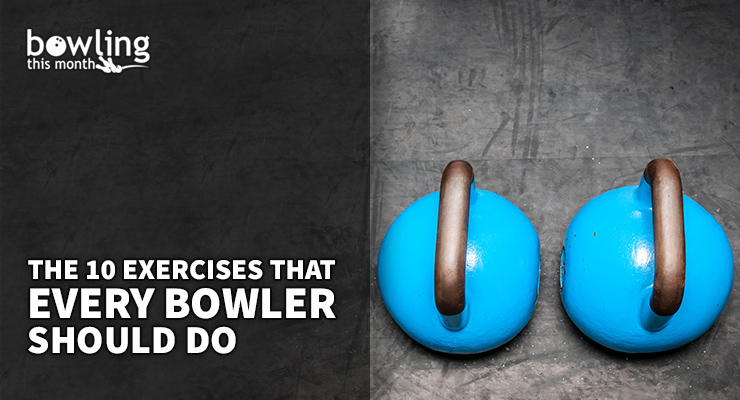Article Contents
- 1. Can training improve your physical game?
- 2. What training should I do?
- 3. How do I know what weight to use for certain exercises?
- 4. The exercises
- 4.1. Split squats
- 4.2. Goblet squats
- 4.3. Lateral band walks
- 4.4. Deadlifts
- 4.5. Rows
- 4.6. Pull-ups
- 4.7. Turkish get-ups (TGU)
- 4.8. Dead bugs
- 4.9. Rotational medicine ball slams
- 4.10. Loaded carries
- 5. Conclusion
Note: This article is only available to Bowling This Month subscribers.
Over the years, I think the most common question to pop up in my inbox is, “What exercises should I do to improve my bowling game?” I have always struggled with responding to this, because it is a very loaded question.
Bowlers tend to have incredibly varied training backgrounds when it comes to exercise and lifting weights. Not only should everyone’s training program be tailored to their experience level, injury history, and training goals, but there is no guarantee that all training programs will lead to performance improvements on the lanes. Bowling is unique in that the physical component of the game is only one small piece of a much larger puzzle. To improve performance, a bowler needs to work on mindset training, learn about equipment, understand lane play and ball motion, as well as work on their physical fitness.
Can training improve your physical game?
Absolutely. Implementing a quality strength training program can improve your body awareness, proprioception, and motor skills. You can improve balance, coordination, endurance, and the ability to produce more power and speed. Above all, I highly recommend following a strength and conditioning program to build resiliency in order to prevent injuries down the road.
Training builds resiliency in the body by teaching it how to properly produce and absorb force in a more efficient way. With every movement we make, we are applying a force into the ground while the ground pushes force back on us. Training changes the way we respond to those ground reaction forces. Strength training increases lean muscle mass in the body, which improves the way the body takes energy in and utilizes it (metabolism), as well as increasing structural tissues like tendons and ligaments.
Strength training is also the only form of exercise that increases bone density. A detrained athlete is at higher risk for fractures, strains, sprains, tendinitis, and even arthritis. Training can help prevent these issues and allow you the ability to compete for as many years as you’d like. In ...
Already a premium member? Click here to log in.


